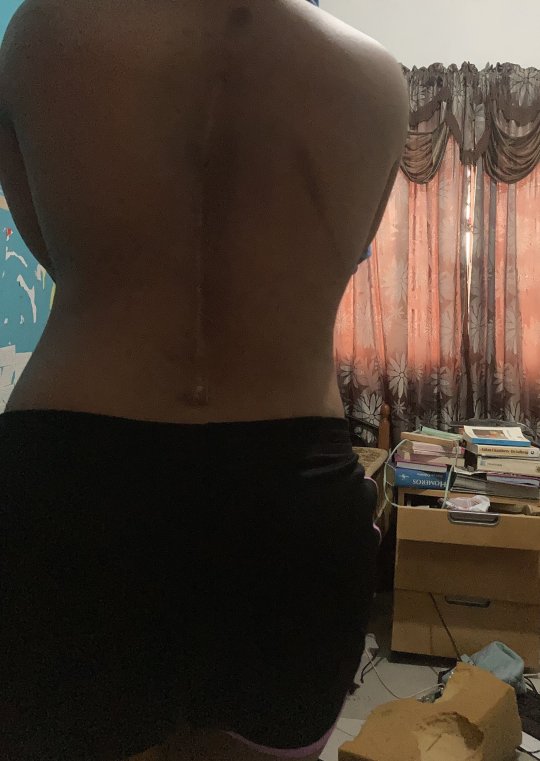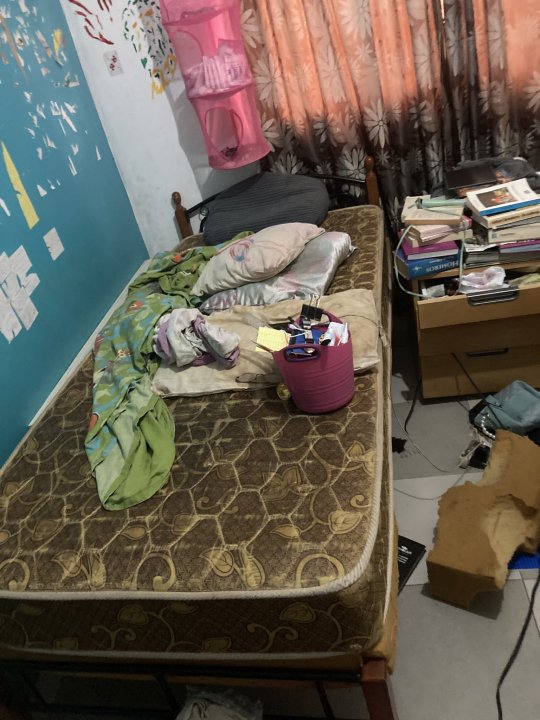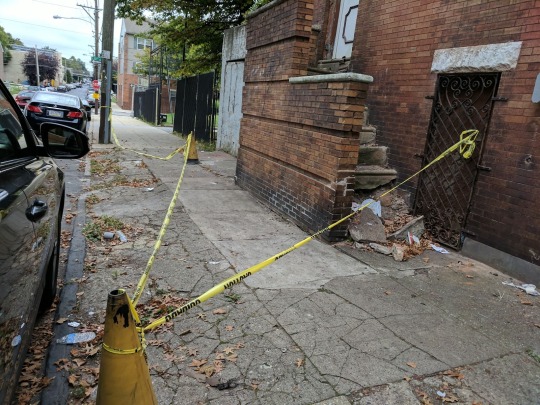#school funding
Text
Hello, please help me get to grad school
150 notes
·
View notes
Text
School Funding and the Teacher Pay offer
So in the light of the pay offer made to teachers in England, there’s a big debate about whether this offer is actually fully funded and whether it is affordable for schools. On twitter, you may see some headteachers saying yes, it is affordable, and some saying it isn’t for their school. This isn’t just down to political allegiance, or a desire to avert more strikes. Because of the way school funding works, a pay offer can be affordable for one school, and not for another.
To understand this, you have to understand how school funding in England works (I think the rUK is similar, but I’m not confident enough to comment on that).
The vast majority of funding is per pupil funding. For every student that attends a school, the school is given £X of funding. Rather bizarrely, the actual amount given varies from local authority to local authority, but on average in England about £5215 was given to each school per pupil. There are other sources of money, which I’ll try to go into later, but this per pupil funding is supposed to cover the day-to-day running costs of a school. This money does go up a bit year on year, but it hasn’t kept pace with schools’ rising costs and so a lot of schools are really strapped for cash.
For most schools, by far the biggest cost is staffing. This isn’t just teachers, but support staff as well- everyone from the caretaker and the receptionist, right up to the head has to be paid out of this budget. The only slight exception to this is 1:1 teaching assistants, but I’ll come to that later. The key point is that the vast majority of staff, certainly all the teaching staff are paid from one central funding pot. This can have unintended consequences- such as schools preferring to employ cheaper early career teachers over more experienced staff who cost well over £10,000 more a year. It also means if you have a shortfall in your budget, often the only way to deal with it is by cutting staff numbers.
If a member of staff is off sick, and the school pays for a supply teacher, it comes from this pot. If someone’s off on maternity, the school pays their enhanced maternity pay, and the cover teacher from this pot. Which, again, can push schools into making decisions that aren’t great.
Schools then also have to pay energy costs. It’s worth bearing in mind that school aren’t covered by the energy price cap, and so were hammered with huge energy bills this winter. There’s often not much that can be done about this. Yes, the head can remind everyone to switch off computers and lights when not in use- but most schools aim to heat the whole building for about half the year- and that’s expensive!
Then there’s resources. Everything from exercise books to art materials, to chemicals for science- every worksheet that gets photocopied. Any new textbooks the school shells out for. New IT equipment. Footballs and rugby balls for PE. If desks or chairs need to be replaced- it all comes out of the same funding pot. When schools are short of cash, this is often the first budget to be cut. In recent years, in the vast majority of schools, this has been cut back as far as possible. Certainly, in primary schools, towards the end of the financial year, you’ll hear of schools where they’re told no more new glue sticks. Many teachers these days will supply certain basics (like spare pens, their own board pens) from their own pockets. If you’ve got a decent parent teacher association fundraising for the school, this is often where the money their raise goes.
So, those are probably the major day to day costs of running a school- but you can also end up with emergency costs. The boiler breaks. A ceiling springs a leak. A window gets broken. You need to fence off part of your site for safety reasons. All of this usually comes out of the central pot of per pupil money too. Sometimes, there are funding sources available for new buildings, but it’s pretty rare to be able to access additional funding for repairs. And some of our schools are older than others. Some are literally falling down!
Some students will attract additional funding. There’s something called “pupil premium” which is mainly for lower income students. There’s special educational needs funding, for students with additional needs (although honestly this system probably needs a post in itself). There can be additional funding for students who speak English as an additional language, or who have been in care.
In theory, this money is supposed to be spent solely on those students, but equally it can go into a central pot to e.g. pay for a class teaching assistant to help all the students who need some additional help. However, in recent years, a lot of these teaching assistants have been cut to save money. Some students with special educational needs have an education and healthcare plan- which can provide additional funding for a 1:1 teaching assistant. Often, these 1:1s are now used for whole class support to try and save money (technically, this is illegal, but as I say, it’s probably a whole separate post).
So, the 900 million the government has said schools will get towards funding the pay offer will be added on to per pupil funding. The department for education won’t work out which schools have more expensive teachers and give them more funding to pay for the pay increase. They won’t look at which schools have had big bills, relating to building work this year. Everyone will just get a certain increase in per pupil funding, and be told to make it work. This can be especially difficult for very small schools, where class sizes are smaller than about 30.
That’s supposed to fund 3% of the 6.5%. As you can see, it probably won’t for every school. But the other 3.5% is the bigger issue. This was the originally recommended pay rise for teachers for the 23-24 school year, before the strikes. Everyone (the DfE, the unions etc) says schools should have already budgeted for this- but some schools have no money to budget with. To fund this, they’re often cutting teaching assistant hours, cutting pastoral staff, maybe even cutting teacher numbers and having larger class sizes. They may cut additional responsibility payments for teaching staff (which are also going up by 6.5%). Definitely, they will try to avoid paying for supply, by using existing staff including any teaching assistants left for cover. In a few cases, they’re even considering shortening the school day, or the school week to reduce costs.
Overall, what it means is higher workload for teachers, and often a less good experience for students. I don’t usually have much sympathy for bosses, but I know there are heads who absolutely feel they cannot make this pay offer work. They’ve cut everything to the bone. They’ve already sacrificed the quality of education in their schools. And that’s why a lot of people are saying the current funding deal isn’t enough.
22 notes
·
View notes
Text
So I just had an idea about fundraising.
You know how sometimes it's pointed out that "If everyone who follows x or views y donated one dollar, z would be paid for"? But since there's no reason to really expect that to happen... most people probably just... don't bother, and the thing either doesn't get funded, or it does because of some very lucky outreach to some generous well-off people.
What if we had some kind of commitment poll? Not a Tumblr poll for the real thing (God no that wouldn't work), but the kind of surveys you put in your email for and you get the results when it's done. And the poll is just, "If X amount of people click this button too, I will donate $1 to the cause." Then you could be pretty certain (barring a massive amount of liars) that your one dollar is making all the difference.
(No actual commitment on this.)
#mutual aid#financial aid#fundraising#crowdfunding#crowdfund#transition fund#medical fundraiser#community aid#legal fees#school funding
16 notes
·
View notes
Text
Funding For School
Hello, I am black girl who is searching for someone who will give me school finds. (its is 600 Euro or 600 US) It's a Dutch school for ICT in Suriname. The reason I can not pay for my own school is because everything is expensive. Things like bread, milk and other necessitates are the same price in the Netherlands. I do am job searching to pay my school. With my salary I won't be able to pay for the school (its is 523 Euro or 600 US) I would love if someone can pay for a years of school. If I am regristrated I can put it on my CV and find a job in the ICT branche. Would appreciate help, thank you very much! I can't start a gofundme because my country is blacklisted as a den full of drugdealers. I deal with corruption and inflation, my parents are retired thus I can't ask them and nepotism and coruption makes asking for loans impossible.
http://unasat.net/aanmelding/aanmelding-school-of-ict/







#black girl reader#black aid#School funding#gofundme#fundraising#fundrasier#mutual funds#raise funds#funds needed
4 notes
·
View notes
Text
It is hard to think of a pathology in American urban life, from crime to poverty to fatherlessness, that is not blamed on “underfunded schools.” Progressives conjure up images of a run-down schoolhouse with moldy walls, tattered decades-old textbooks, and musty blackboards to explain away the decades of academic underperformance and high drop-out, truancy, and delinquency rates in inner-city schools.
A new report from the Thomas B. Fordham Institute, highlighted in a recent column by the Institute’s policy and editorial associate, casts serious doubt on the proposition that most poor children in America attend “underfunded schools.” In fact, in many states, the opposite is true.
The report’s author, Adam Tyner, found that “students from poor families generally attend better-funded schools than students from wealthier families.” He found that all but three states now use a progressive school-funding scheme, meaning they compensate for disparities in local tax revenue with state and federal dollars to ensure more-equal funding of students across school districts.
It wasn’t always that way. Many schools in the early 20th century were racially segregated, and conditions across those schools were manifestly unequal. Even after the Court overturned school segregation in Brown v. Board of Education, inequalities persisted for decades. Since states often financed their schools with local tax revenue, the mass urban exodus in response to crime, rioting, and disorder cratered those cities’ tax bases and plagued school districts well into the 1980s and ’90s, leaving them understaffed and underfunded.
Today, however, policy changes and legal action have not only corrected but reversed these disparities in most states. At least twenty-seven state supreme courts have overturned school-financing systems for being insufficiently egalitarian, prompting states to implement progressive funding schemes to correct for local revenue disparities. The gap between per pupil funding in wealthier and poorer school districts closed nationally in 2005.
States typically now spend more on poor students than on wealthier ones. The most comprehensive national study of states’ school funding found that states on average spend $529 more per student per year in school districts with poorer populations than in those with wealthier populations. Many states now have funds set aside to subsidize the educations of poor students, such as Tennessee, which last year passed a student-based education-financing bill giving each child a base dollar amount to spend on his education, regardless of his socioeconomic status, and gives “disadvantaged” students an additional stipend beyond the base allowance.
While schools districts within states now largely receive equal or near-equal funding regardless of the districts’ tax revenue, states’ preference for poorer students is actually stronger when you look at student-level, rather than district-level, data. In addition to state and federal aid to poor students, boards of education typically allocate more of their district’s resources to schools serving poorer children than to those serving comparatively wealthier ones.
Because complaints about “underfunded schools” no longer have a factual basis, Tyner notes that “equity-minded school-finance reformers now advocate for ’adequacy’ funding,” that is, spending more on poor children’s educations than on rich children’s. Maybe you agree with that approach, and given the other obstacles poor children have to overcome, I certainly could see an argument for it. But it is debatable whether, or to what extent, increasing school budgets will improve students’ academic performance at all.
Studies on the question are gate-kept by education professionals who, in addition to not being very impressive—one Rutgers education professor’s study concluded that “sufficient financial resources are a necessary underlying condition for providing quality education,” which just begs the question—have a vested interest in preserving the status quo. Some localities, where that gatekeeping isn’t so strong, have found that the relationship between a school’s per pupil expenditure and student performance is either weak or nonexistent. Chicago school districts, for example, spend more than $17,000 per student per year—the figure jumps to almost $30,000 when you include all sources of funding—and only 20 percent of the districts’ students can read at grade level. Other research indicates that money can improve students’ outcomes, but it depends how the money is allocated—spending more on things like teachers’ pensions or on superfluous tools such as “SmartBoards” is unlikely to move the needle.
It is harder, no doubt, for a child in an inner-city school to get an adequate education than it is for a similarly endowed student in a suburban school. But it is harder for those students for reasons that have little to do with the funding and much more to do with the school environment itself and disorder in the community at large. Urban schools have significantly higher suspension rates than do suburban and rural school districts, and it’s not because the (largely black) staffs of these schools are racist. It is almost impossible to learn in an environment where your peers are constantly acting out. No amount of funding, or electronic devices in the classroom, will change that.
3 notes
·
View notes
Text
4 notes
·
View notes
Text
What we need to do is convince all the disney adults in america that high speed rail would be a preferable way of getting to disneyworld compared to driving or flying. We could maybe harness their fondness for the monorail or something, but this is a group of people that has time, income, and passion that we could leverage. If we could direct 5% of the enthusiasm they have for limited edition popcorn buckets into calling their representatives and demanding high-speed interstate rail, we could get it by 2030
#at this point I don't care whether rail is privately or publicly funded#I'll ride the Mickey Mouse Express if it means not having to drive or fly everywhere#if you're on the disneyland side of the country I just don't have as strong a grasp on your psychology as a demographic#but I went to school with some twice a year disneyworld people#if you are a disney adult and you're reading this please don't take it as an insult#I don't think it comes off that way but you never know
68K notes
·
View notes
Text
School Public vs Private
Some US politicians want to defund public schools even though, given these statistics, public schools save tax payers money (and are grossly underfunded...)
Take these statistics: Public schools get $3000 per in-district student and $1650 per open enrolled student, per year, via tax money. Local private school's tuition in 2024 is $4500 per student per year.
If you want to educate 1000 students in a Public School District with 700 in district students + 300 open enrollment students it would cost taxpayers approximately $2,595,000 per 9 month school year. However if you want to educate those same 1000 students at a Private school with a tuition rate of $4500, using school choice vouchers, it would cost taxpayers approximately $4,500,000 per 9 month school year.
Yet with the private school, they can create reasons to discriminate, so that they don't have to educate all 1000 students...expecting the slack to be picked up by homeschooling or work...potentially bringing childhood for some children back to this again...smh



#education#education system#public education#private education#child labor#school choice#school funding
0 notes
Text
The poorest schools had to make do with drill and Swedish gymnastics, but working-class girls, expected to help at home, had no time to practise after class.
"Normal Women: 900 Years of Making History" - Philippa Gregory
#book quote#normal women#philippa gregory#nonfiction#school funding#make do#drills#military drills#swedish gymnastics#working class#sport
0 notes
Text
those "world's finest chocolate" guys would probably make more money just selling the bars instead of selling them to schools. it is indeed the world's finest chocolate
0 notes
Text
2024 push to divert more funding to charter schools in Washington fizzles at fiscal cutoff
A pair of bills that sought to divert more public funds to unaccountable, privately-run charter schools in Washington appear to have fizzled out after neither received a “do pass” recommendation from the fiscal committees in their respective chambers prior to today’s cutoff for legislation with a fiscal impact.
Senate Bill 5807, prime sponsored by Senator Mark Mullet (D-5th District: East King…

View On WordPress
0 notes
Text
Unpacking Oklahoma's Education Funding: A Look Beyond Marijuana and Lottery Revenue
Dive into the complexities of Oklahoma's education funding, where marijuana sales and lottery tickets play pivotal roles. This post unravels the intricacies of state budgets, revealing the challenges and impacts of these unconventional revenue streams...
Introduction:
Welcome to ThinkTank Theorium, where we don’t just scratch the surface – we dig deep. Today, we’re zeroing in on Oklahoma’s education funding. It’s more than just textbooks and chalkboards; we’re talking green – and not just the kind in textbooks. Marijuana sales and lottery tickets have entered the chat, but do they really make the grade in funding our schools?
The Green Rush:…

View On WordPress
#Economic Impact#Education Funding#Educational Challenges#Fiscal Policy#Government Finance#Lottery Revenue#Marijuana Sales#Oklahoma#Policy Analysis#Public Schools#Revenue Allocation#School Funding#State Budget#State Economy#Taxation#ThinkTank Theorium#ThunkDeep#ThunkSpiracy
0 notes
Link
0 notes
Text
Elsewhere in the country, other local conditions exacerbate district divides. In Alabama, which has six district borders in the report’s top 50, many wealthier suburban school systems have chosen to secede from their county districts, worsening the economic segregation between them. Despite the fact that nearly half of the students enrolled in Arizona’s Balsz Elementary School District on the east side of Phoenix are English language learners, Balsz receives some 30 percent less in state and local funding than its wealthy neighbor Scottsdale Unified.
Laura Bliss, Where School District Borders Are Invisible Fences
#class war#capitalism#school funding#equity#laura bliss#bliss#where school district borders are invisible fences#8/23/2016#bliss 2016#did i already do this
0 notes
Text
Rough Realism and Realizations, A Visual Story of Neglect
I graduated high school with my eyes set on moving to Philadelphia. Mainly to attend Temple University and participate in the skateboarding culture that the city fostered. A culture communicated to me in my teenhood through YouTube videos of skateboarders and Tumblr posts.
Pop-Punk band ‘The Wonder Years’ used Philadelphia as a theme and backdrop in some of their music. Lines like “the fountain was off” from “Local Man Ruins Everything”, delivered in their extremely emo, punk, angsty style portrayed and delivered ideas of the city to people who might never have seen it before.
When it came to Philly, I saw a lot of the white working-class experiences in the media, whether it’s catchy and gritty pop punk, or low-class bar owners in South Philadelphia. Valid experiences that deserve portrayal.
Nevertheless, the idea of 'Philadelphia' mediated is a diluted version of the reality its majority experiences.
Philadelphia is not limited to those mediated experiences, which do reflect the experiences of some people. People who live in the central high rises have a different experience of the city than those who live in the various neighbourhoods of Philadelphia. I happened to live in North Philadelphia, close to the Temple University campus where I matriculated.
On a given day, tourists staying near sights like the liberty bell or the home where the Declaration of Independence was written, by slave owner Thomas Jefferson, wouldn’t come up to that area. Students of the university living temporarily in the area were not good guests and looked down upon the local residents for a variety of reasons, mainly related to their misfortune and lack of wealth.
Students sought out affordable housing close to campus, and the area, because of neglect by the city, was cheap.
Living there, many complained about the aesthetics and blamed local residents instead of the lack of funding for upkeep. Exacerbating the discomfort of residents.

Lack of funding and student dissatisfaction was a great excuse for what the administration at Temple University was planning to do in the area.
Temple University, my alma mater (well one of them), was actively pushing local residents, who the university was established for, out of the surrounding area. To build a goddamn stadium. This was unpopular with many students and those who lived in the area. The 2008 mortgage crisis made it easier for the university to do this.
This consideration for the football stadium started in 2015. Temple University was started as a night school for ministers-in-training to attend classes at night in a church. That is why its mascot is the Temple Owl. The consideration was immensely disconnected from the university’s history.
Anyone living in North Philadelphia knew that it was ridiculous. The thumbprint of the area would be changed forever and it would just destroy the thumbprint of the area. Temple University’s administration claimed that this was going to help the community when in reality everyone knew that this would tear it apart further. From one end, youth were struggling to get adequate schooling due to the state’s gutting of funding for public schools in Philadelphia, and on the other end, landlords who did not live in Philadelphia were buying up row homes and as many buildings as they can (thanks to the mortgage crisis) and building cheaply made, “luxury” student accommodations that were too expensive for the local residents to rent.
The empty lots started to pile up as “investors” and Temple both were waiting for houses on either side of each lot to empty up. Meaning, be able to get the residents out.
Communities knew they had to stick together or no one will fare any better due to the systematic imposition on people’s lives.
Dinner time in some Philadelphia neighbourhoods wasn’t just a family occasion, they were a time of community survivalist action. I regret not doing more for the people.


It went beyond North Philly to Kensington and South Philly. People who cared about the city and knew how it affected the residents personally knew this was unfair. Philly may become a "nicer", more "polite" city someday, but the people who made it Philly won't be there. Just like Brooklyn.
Right-wing students were among the few who supported the stadium project. They saw little wrong in this and believed that if the residents of North Philadelphia wanted to stay in their homes, the homes that their families have lived in since before the inception of Temple University, then they should build up the ability to afford to do so. In other words, “if they want to keep their house, they should just have more money.”
Anyone coming from a poor, working-class environment knows that it's not as simple as working a bit and saving. The realities of life are much more complex in Philadelphia. Where food desserts are normal in North Philadelphia and you are doing well if you have 50 dollars leftover from your paycheck a month.

The view of houses ‘moving’ across the window before the sun set evoked excitement. At the time, Kensington was hosting political meetings of many leftist parties. The PSL and other parties were headquartered there, with the express intent of supporting the community. I enjoyed partaking when I could, but I have to say I might be more of an anarchist than a socialist - probably due to growing up in the middle east and being connected and aware of the community aspect that allowed my recent ancestors to survive. Maybe that’s why I could never commit to being as disciplined a comrade as the others, despite my regret of not doing more for the people I was living amongst. And looking back at it, I am glad I wasn’t committed to the ideals. But I continue to be committed to collective survival in the circles I do occupy.

I see now that collective action is necessary for survival, but I have no material possibility at the moment to participate in that. You don’t live in a collection of buildings and famous streets. You live around people who are housed (if lucky) in those buildings. They are what make the city or town, and it in turn makes them.
Where do we go from here? I would ask someone who lives there. Someone who is struggling with housing issues, food access, and lack of school funding in Philadelphia.
#philadelphia#photo essay#mediation#North Philadelphia#tourists#temple university#mortgage crisis#temple stadium#luxury apartments#brooklyn#gentrification#PSL#party for socialism and liberation#school funding#housing crisis
1 note
·
View note
